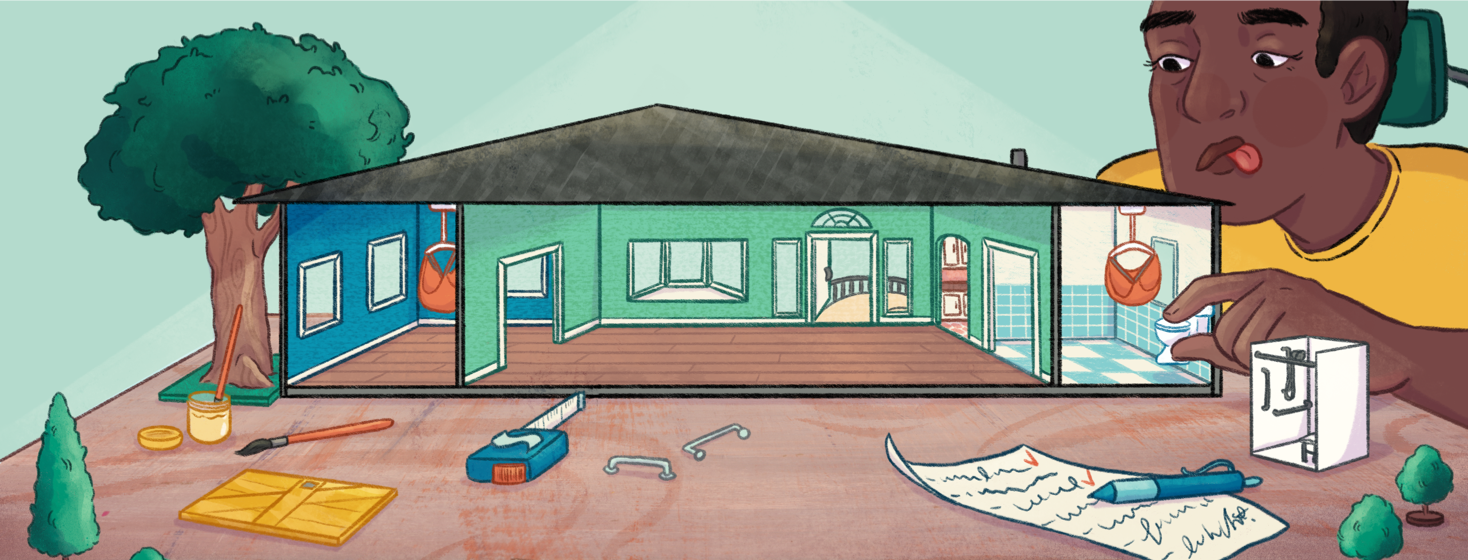Myasthenia Gravis-Friendly House Adaptations
We recently conducted the Inaugural Myasthenia Gravis (MG) In America survey. One question on the survey asked, "What changes or modifications to your household/living space have you made since you started experiencing symptoms and/or were diagnosed with MG?"
The Facebook community recently answered a similar prompt: "If I could build an MG-friendly house, it would include ____."
We wanted to share some of their insights with the wider MG community.
Why do I need to change my home?
MG is an autoimmune disease that leads to severe muscle weakening. The nerves fail to communicate to make the muscles work. When you have MG, it may become more challenging to:1
- Open doors and cupboards
- Get in and out of a sitting position
- Avoid tripping over objects
Home adaptations could become necessary to assist your weakened muscles. About 6 out of 10 people who responded to our survey had modified their homes to accommodate MG symptoms.1
Single-story home
One of the most common responses was moving to a house without stairs. Others included:
- An open floor plan to easily navigate between rooms
- Removing any area rugs to avoid stumbling
- Installing a stairlift or ramp if moving is not feasible or there are steps
"Ramps, nonslippery floors, a lot of space to avoid tripping on every cramped space."
"No stairs, ground-floor laundry with washer and dryer on pedestals."
"Moved to a condo from a 2-story house."
"Got rid of area rugs. Built handicap ramp to the front door."
Bathroom improvements
Modifying the bathroom to improve safety is another priority. Climbing in and out of bathtubs can be challenging. Tubs and floors are slippery when wet. Getting on and off the toilet can also be challenging. The bathroom is often customized to complete tasks easier with MG.
"Grab bar near toilet and bathtub."
"Higher toilets, walk-in shower, wider doorways for walkers and wheelchairs, bars beside the toilet."
"Redid shower to include seats."
Kitchen upgrades
Lifting dishes out of overhead cabinets may be a struggle with MG. Low tables and counters require difficult bending. Cooking can be a draining task with lots of fine-motor movement. Raising counters to a good height for you is helpful. Using under-counter space for storage conserves energy.
"Rounded countertop corners; all lower cabinets would be pullout shelving/drawers."
"Stool in the kitchen for meal prep."
Bedroom alterations
Having easy access to the bedroom for resting can be critical with MG. You shared that you rearranged or moved to have a main-floor bedroom. You need a bed you can get into and out of without difficulty. Beds that are higher or adjustable are helpful.
"Bed moved closer to the bathroom."
"Head of bed was raised previously, which helps."
"Adjustable bed."
"Moved to a house with a bedroom on the main floor."
Lifestyle changes
There are other changes you make for general home upkeep and maintenance. You also learn to modify your behaviors and expectations with MG. You focus on staying safe and conserving your energy. Several things help you prioritize your health:
"Grab bars throughout the house."
"Invest in an iRobot and Braava jet to do the floors."
"My occupational therapist said to set up 'stations.' If you feel weak, you’ll have a chair to sit on. If certain chores [are challenging], say folding laundry, set up a station with TV trays, etc."
"Mini fridge in every room, so you don’t have to walk."
"No clutter on the floor, groceries delivered, try to do all errands together once a week, realize the need for rest."
"Life Alert in case I fall when she’s [my daughter] not home."
"Lots of big windows so when I can’t be out in the heat and cold, I can still enjoy the sunshine and outdoors, central air."
Thank you
We appreciate everyone who shared with us through the Facebook prompt or the survey.
The 2021 Myasthenia Gravis In America survey was conducted online from October 2020 through February 2021. The survey was completed by 600 people.

Join the conversation